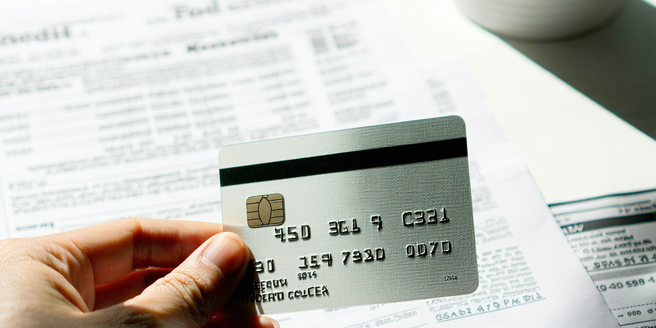Understanding Secured Credit Cards
| Feature | Secured Card | Unsecured Card |
| Deposit Requirement | Yes | No |
| Credit Limit | Usually Equals Deposit | Varies |
| Credit Check | Minimal | Yes |
| Interest Rate | Varies | Varies |
| Purpose | Build Credit | General Use |
How Secured Credit Cards Work
Secured credit cards offer a practical solution for individuals looking to build or rebuild their credit history. Unlike traditional credit cards, secured cards require a cash deposit, which acts as collateral and typically sets your credit limit. For example, a $300 deposit usually means a $300 credit limit. This makes secured cards particularly appealing to those with poor or no credit who might struggle to qualify for unsecured credit cards.
When you make purchases with a secured credit card, you’re demonstrating your ability to manage credit responsibly. Consistent, on-time payments contribute positively to your credit report, improving your credit score over time. It’s also important to note that some secured credit cards can transition to unsecured cards with good usage, allowing users to graduate to better financial products. Additionally, secured cards often come with fewer fees than their unsecured counterparts, providing a cost-effective option for those on a tight budget.
Building Credit with a Secured Card
Building credit with a secured card is a strategic and effective way to establish or rebuild your credit history. A secured card works just like a regular credit card, but it requires a cash deposit as collateral. This deposit typically sets your credit limit, helping mitigate the risk for the issuer. Using a secured card responsibly fosters good credit habits, acting as a stepping stone to unsecured credit cards and loans in the future. To maximize the benefits, make small purchases and pay off your balance in full each month. This consistent activity demonstrates reliability to credit bureaus, gradually improving your credit score. Additionally, ensure your card issuer reports to all three major credit bureaus: Equifax, Experian, and TransUnion. Over time, this disciplined approach not only enhances your credit score but also empowers you with financial confidence and opportunities.
Comparing Secured vs. Unsecured Cards
When deciding between secured and unsecured credit cards, it’s essential to understand their distinct features and benefits. Secured credit cards require a security deposit, which typically determines your credit limit. This deposit minimizes the lender’s risk, making secured cards an ideal choice for those with limited or poor credit history aiming to build or rebuild credit. As you establish a pattern of responsible spending and timely payments, some issuers may convert your secured card to an unsecured one, refunding your deposit.
On the other hand, unsecured credit cards do not require a security deposit, offering more convenience and a range of benefits including rewards, introductory rates, and higher credit limits, assuming you qualify based on your credit profile. They often come with varied additional perks like travel insurance or cashback programs. However, they might pose a challenge for those with fair or poor credit due to stricter eligibility criteria. Understanding each type helps you choose the right option to match your financial goals and credit needs.
Choosing the Right Secured Card Provider
Choosing the right secured card provider is an important step in taking control of your financial health. When considering your options, there are several factors to evaluate to ensure you’re making a choice that aligns with your financial goals. First, assess the fees associated with the card; some providers may charge annual fees, while others might offer low or no fees, allowing you to minimize costs. Next, examine their interest rates – ideally, you want a provider that offers competitive rates, helping you pay less interest on any outstanding balance. Additionally, pay attention to the minimum security deposit required, as this determines your credit limit. It’s also beneficial to select a provider that reports to all three major credit bureaus, aiding in building or improving your credit score. Lastly, consider any added benefits such as rewards programs or credit education resources.
Common Fees Associated with Secured Cards
Secured credit cards are a popular choice for individuals looking to build or rebuild their credit history. However, like many financial products, they often come with a variety of fees that can add up. One common fee associated with secured cards is the annual fee, which is typically charged to maintain your account each year. This fee can vary widely, so it’s wise to compare options before committing. Additionally, secured cards may have application or processing fees that are charged when you first apply. Another fee to be mindful of is the monthly maintenance fee, designed to cover the servicing of your account. Also, if you use your card abroad, foreign transaction fees might apply, typically around 3% of the purchase amount. Always review the terms and conditions to understand any other potential fees, such as cash advance fees or penalty fees for late payments.
Tips for Managing Your Secured Card
Managing a secured credit card effectively is crucial for building or rebuilding your credit profile. Here are some tips to help you make the most of it. First, ensure you make your monthly payments on time to avoid late fees and interest charges, as timely payments positively impact your credit score. Setting up automatic payments or alerts can help you stay on track. Second, keep your credit utilization low; for instance, aim to use no more than 30% of your credit limit. This demonstrates responsible credit behavior to issuers. Third, regularly monitor your account activity to catch any unauthorized transactions early, protecting your finances and credit. Lastly, periodically review your credit reports from major bureaus to track your progress and address any discrepancies quickly. These practices will help leverage your secured card as a stepping stone to better credit options.
Converting to an Unsecured Credit Card
Transitioning from a secured to an unsecured credit card is a significant financial milestone that indicates your creditworthiness has reached a level where lenders trust you without requiring collateral. Typically, secured credit cards require a cash deposit that serves as your credit limit. As you use this card responsibly by making timely payments and maintaining low credit utilization, your credit score is likely to improve.
Once you demonstrate financial responsibility over several months, you might be eligible to graduate to an unsecured card, which doesn’t require a deposit and often comes with better benefits like higher credit limits, rewards programs, and lower interest rates. To facilitate this transition, regularly monitor your credit reports and scores to understand your creditworthiness from the lender’s perspective. It’s also a good idea to contact your credit issuer to inquire about a possible transition to an unsecured card, as many companies periodically review accounts for eligibility upgrades.
Secured Credit Cards and Financial Health
Secured credit cards can be a valuable tool for individuals looking to enhance their financial health, particularly for those new to credit or those aiming to rebuild their credit score. These cards require a cash deposit as collateral, which typically serves as the credit limit, thus minimizing the risk for both the lender and the cardholder. By using a secured credit card responsibly—such as making timely payments and keeping the credit utilization low—users can steadily improve their credit profile.
Over time, consistent positive activity is reported to credit agencies, which can lead to an improved credit score and the potential to graduate to an unsecured credit card. It’s also a great way to learn and establish good credit habits without the fear of overspending, as the credit limit is directly tied to the amount deposited. Therefore, secured credit cards not only offer a pathway to better credit scores but also provide a disciplined approach to managing finances.
Avoiding Pitfalls with Secured Credit Cards
Secured credit cards can be a valuable tool for building or rebuilding credit, but it’s essential to navigate their potential pitfalls wisely to maximize their benefits. One common mistake is failing to choose the right card. Not all secured cards offer the same terms; some might have exorbitant annual fees or lack a clear path to transition to an unsecured card. Research thoroughly and select a card with reasonable fees and favorable reviews. Additionally, mismanaging payments is a crucial pitfall. Just like any credit product, timely payments are vital for building a positive credit history. Set up automatic payments or reminders to ensure you’re never late. Lastly, avoid spending to the limit—aim to use only a small portion of your available credit. This will help maintain a low credit utilization ratio, which is crucial for a healthy credit score.



